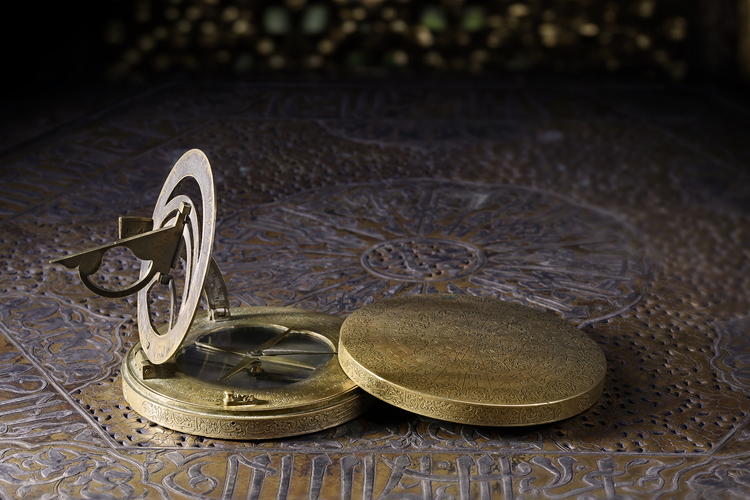A RARE PERSIAN QIBLA FINDER FITTED WITH A EUROPEAN STYLE "UNIVERSAL" SUNDIAL, 18TH CENTURY
Brass Qibla.
Diameter: 8.2 cm.
Height: 8 cm.
This portable qibla finder is of the rare kind that is fitted with a “European style” sundial. The sundial on the instrument is generally known as the “universal inclining sundial” and was very common in Europe in the eighteenth and nineteenth centuries. According to David King, some of these sundials might be imported from Europe but engraved in Persia. It is universal since the hour-dial can be elevated to match any terrestrial latitude.
The numbers on the hour-dial are highly stylized forms of Arabic numerals and are often found on clocks and watches made by Europeans for Persian and Turkish markets in the eighteenth and nineteenth centuries.
Similar Instruments:
There are three other instruments known, which have a similar European sundial. The first is in the collection of the Museum for the History of Science in Oxford, while the second one is found in the collection of the National Maritime Museum. A third instrument can be seen on p.27 of the 1931 exhibition catalogue “An Illustrated Souvenir of the Exhibition of Persian Art”, however only one image of the instrument (from above) is given.
Besides the above mentioned three instruments which are qibla finders of the regular type using gazetteers for indicating Qibla information, two 17th century Safavid “universal qibla finders” containing a world map grid were also fitted with a similar sundial. At least one of the surviving instruments is still fitted with a European style universal inclining sundial, similar to our instrument.
Literature:
David A. King, Two Iranian World-Maps for Finding the Direction and Distance to Mecca. Imago Mundi, Vol. 49 (1997), pp. 62-82 (22 pages)
David A. King, World Maps for Finding the Direction and Distance to Mecca, Brill, Leiden, 1999 ( See p. 284, section 8.2.1 for information on the type of numerals and p. 292, section 8.2.3, for information on the inclining sundial)









